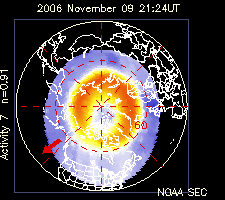
THREE RED SPOTS: How many red spots does Jupiter have? On March 17th, Mike Salway of Australia looked through his 12-inch telescope and counted three:
Red spot #1 is the Great Red Spot you've heard about, hundreds of years old and twice as wide as Earth. Red spot #2 is Oval BA, which formed white in 2000 and turned red in 2006. Red spot #3 is a newcomer, "the Little Red Spot," says Salway, possibly only weeks old.
All these spots are storms--anticyclones big enough to swallow a rocky planet. What makes them red? Curiously, no one knows why the Great Red Spot itself is red. A favorite idea is that the storm dredges "chromophores" (color-changing compounds) from deep inside Jupiter up to the cloudtops where sunlight triggers a chemical reaction with red by-products. But what are the chromosphores and what is the chemical reaction? It's a mystery--now multiplied by three.
Jupiter is emerging from the glare of the sun as a bright morning star, visible in the southeast before sunrise: sky map. "I'm still waiting for some 'excellent' morning to deliver the best resolution and detail," says Salway, "but as Jupiter keeps climbing I'm sure it will come soon."


<< Home